Rabbits love to keep their young (called kits) on the nest. Some might have difficulty finding the animal’s home with the untrained eye. Don’t fret! This article will tell you all about what a rabbit nest looks like and how to find it.
An Overview on the Nesting Process of Rabbits
Before three to four weeks of the birthing process, rabbits will find the nesting ground. The mother rabbit will start searching for a secluded spot with no vulnerability or danger around the area.
Some pet owners will provide their rabbits with cardboard nests with nesting materials such as hay and dried leaves. On the other hand, wild rabbits will make their own with materials around their habitat.
Once they find a suitable nesting spot, they dig a hole for their nest. The hole will hide their young from predators looking for a quick meal. It will also keep them away and feed the hay and leaves present in the spot.
After the rabbit has dug a hole, the mother may start removing and collecting fur on the nest. Other materials such as leaves, hay, soft twigs, and dried grass build and surround the nest for comfort. The nest will be the home of the kits for one to three weeks until they can go and forage independently.
Mother rabbits will bury the kits inside the nest to ensure their safety. It’s not dangerous for the kits as there are air pockets inside the nest so that they don’t suffocate. The ground above will also keep the predators away from them.
As baby rabbits are odorless, most animals that prey on them will be none the wiser. Odor is also the reason why mother rabbits will visit the kits around one to two times a day. Limiting the time she spends with her young will also keep the scent from her minimal.
When visiting the babies, the mother rabbit will dig to feed her babies. They stay around a few minutes and will re-burry the kits again.
What do Rabbit Nests Look Like?
Rabbit nests generally look like a patch along the grass littered with hay and dried leaves. Fur is also a typical lining in the nest, along with twigs. Active nests are often tough to find as they are commonly hidden inside patches of dried plant materials and dirt.
There is a hole under the nest that will be the home of the kits for two to three weeks. After that, they will leave the nest and start foraging independently.
Signs of Rabbit Nest
Here are the signs you might be looking for to recognize a rabbit nest.
- Rabbit Fur: Rabbit furs are the most tell-tale sign that the spot is a rabbit nest. During the first weeks of the pregnancy, the mother rabbit will pick and collect fur from her chest and other body parts. The softness will serve as comfortable padding for the kits.
- Dried Plant Material: Dried plant materials such as hay, leaves, and twigs are commonly present in the rabbit’s nest. It’s widely used to line the upper part of the nest where the kits are buried. The dried plants provide camouflage that will deter any predators nearby.
- Hole: You can differentiate a rabbit nest from a regular pile of dead grass through the holes. Some clear spots are present underneath whether the nest is active or not. With that said, we don’t recommend disturbing the rabbits’ nests, especially if they are still active.
- Baby Rabbits: If there is a small opening in the nest, you might see baby rabbits or kits resting and buried inside. You don’t have to worry as they were safe inside the nest. If you ever stumble upon an active nest, it’s recommended to leave it alone.
How to Find Rabbit Nest?
Finding a rabbit nest in the wild is more complicated as it may take hours of searching. Here are some steps to find a rabbit nest to make the work easier.
Find an Area with a High Rabbit Population
If you want to find a rabbit nest in a much shorter time, searching in an area with a high rabbit population can be your best first step. A higher rabbit population means a higher chance of finding their habitat.
You can search around your area and ask the locals if they know a spot with many rabbits. Although, you must be careful when searching for rabbits in the wild as there are many predators when there is a surplus of prey.
Search in Meadows and Grassy Areas
Rabbits are grazing animals, so their typical habitat is dense grassy meadows. They thrive on the diet of grass and hay, resulting in their love for the place that can provide them with that.
You might be surprised to know that rabbits can and will make their nests in an open area. It might seem counterproductive, but it works. Most predators don’t like being in the open.
Predators mostly lurk around large bushes or trees to lead the prey with a sense of security. Rabbits use this to their advantage as they use the vast space as the nest for their kits.
Try Going to a Rabbit Sanctuary
Suppose you want a place to observe and look at a rabbit nest. Going to a rabbit sanctuary like this one can be a great option.
Rabbit sanctuaries provide a safe place for rabbits to thrive and multiply. Most shelters have a wide range and meadows where rabbits can safely and naturally build their nests as they do in the wild.
There are also guides in the sanctuaries that make the tour and search safe, not just for you but also for the rabbits.
When searching for rabbit nests in the wild, you might also encounter other nests, such as snakes, as they share a habitat. So, searching in a sanctuary can be more fun and safer option.
What to Do if You Find Rabbit Nest?
If you ever find a rabbit nest, it’s best to leave it alone. Rabbits are very fast to grow. They are already fully functional at around two to three weeks and will leave the nest soon.
If you ever find them in the garden or fields, it’s best not to touch or disturb them. Most people will grow concerned that the baby rabbits are buried. There is nothing to worry about as it’s natural and for their safety.
You might find the urge to touch the rabbits. There is a common misconception that touching rabbits will make the doe abandon them, but it’s not true. Rabbits will not leave their kits because there is a foreign human smell.
With that said, if rabbit nests happen to be near your property and there are dogs or cats present, the mother rabbit has a higher possibility of abandoning their young. It’s because the risk of getting killed is more important than the lives of her kits. Although it may sound disheartening, it’s a common thing that happens in the wild.
So, if there is a rabbit nest near your areas, such as a garden or plantation, you can either get rid of them or leave them alone. We recommend giving space for the young rabbits. They will mostly go to stay for about two to three weeks.
They are not invasive unless they are dug into your flower beds. If you can, try to contact an animal sanctuary or rescue center near you to have them take the kits to a safe place. Most of them will take in the rabbits and provide proper care.
Can You Move a Rabbit Nest?
If you are dealing with a rabbit nest that affects your property, moving them can be an option. Although, moving them to the nearby area can be your best option. Rabbits do not necessarily abandon their young once their nest is moved.
The mother doe might come around the area and call for her kits. If you move the nest just a few meters away, she can hear the baby rabbits and go to them.
If this is not an option, you can call for an animal rescue that may take them in. Most animal rescues are equipped when dealing with these situations, so if there is one near you, they will be a very viable and safe option.
We do not recommend leaving the baby rabbit in the open. Not having them in a buried and secluded place can trigger the mother to be hostile towards the kits.
This is entirely normal as leaving the baby rabbits unprotected will stress the doe and lead to their kits’ abandonment.
In Conclusion
Searching for a rabbit nest can be a long work, especially if the area you are in does not have a good amount of rabbit population. We hope that you now have a better understanding of what the rabbit nest looks like and where to find them with this guide.
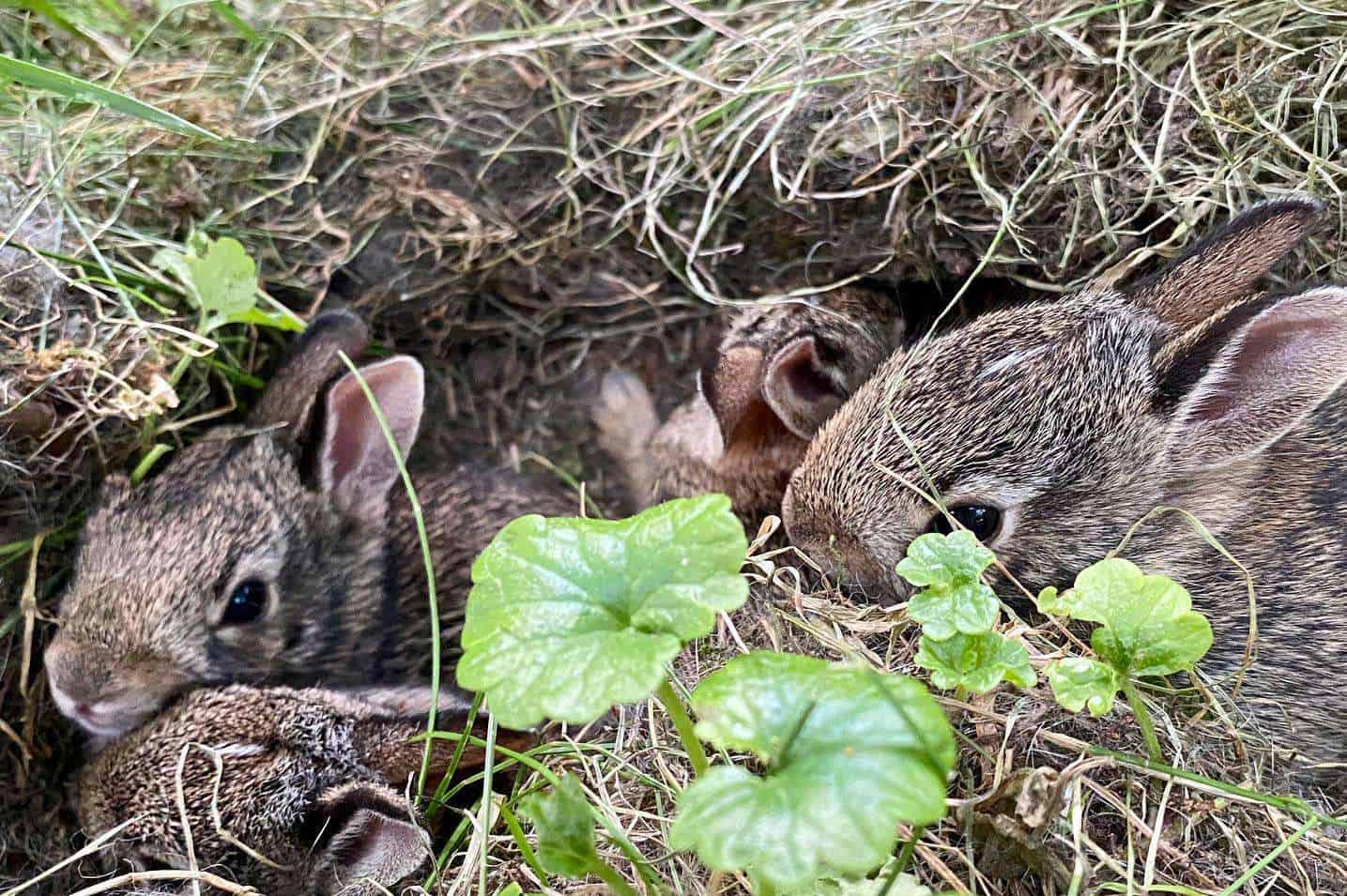
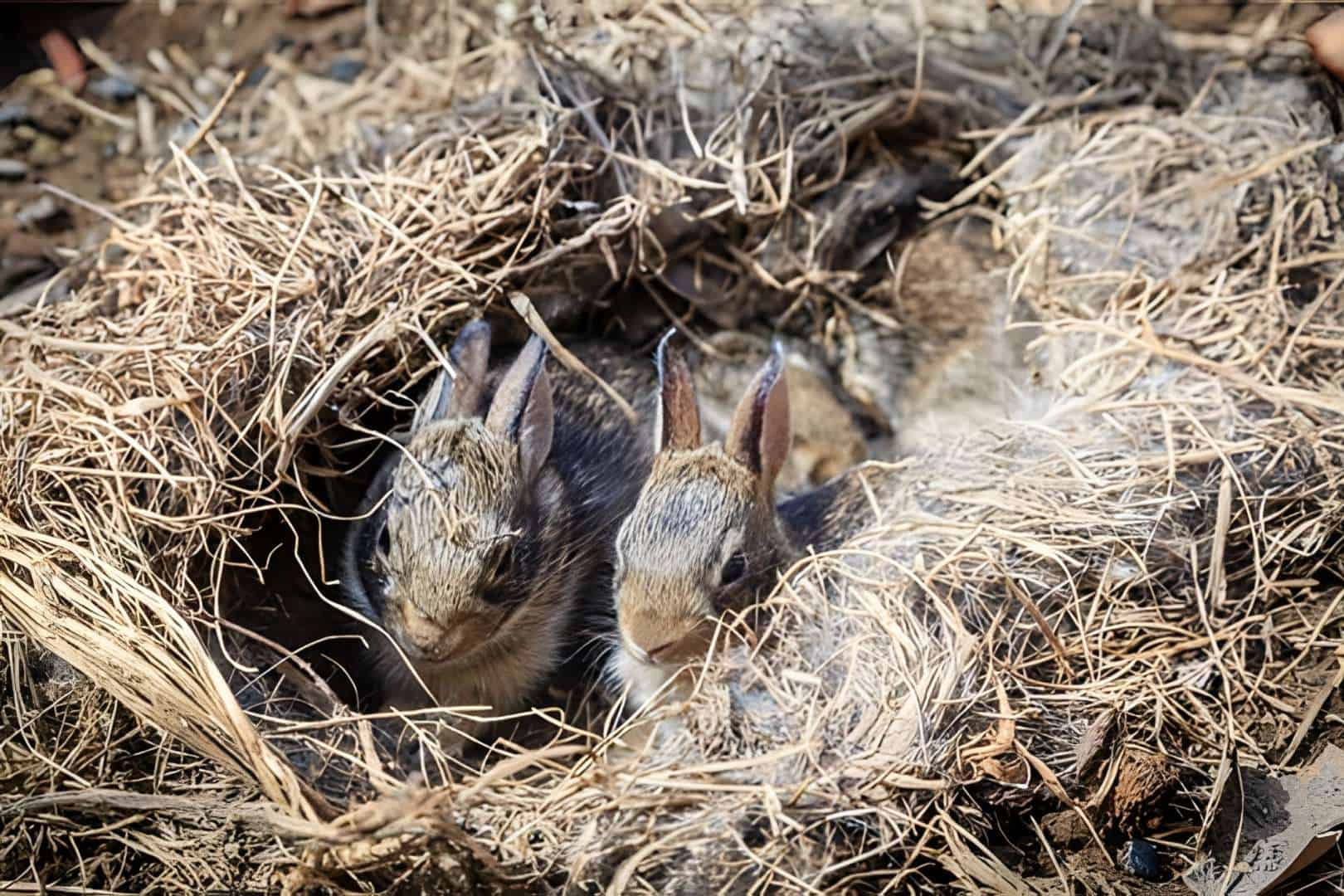
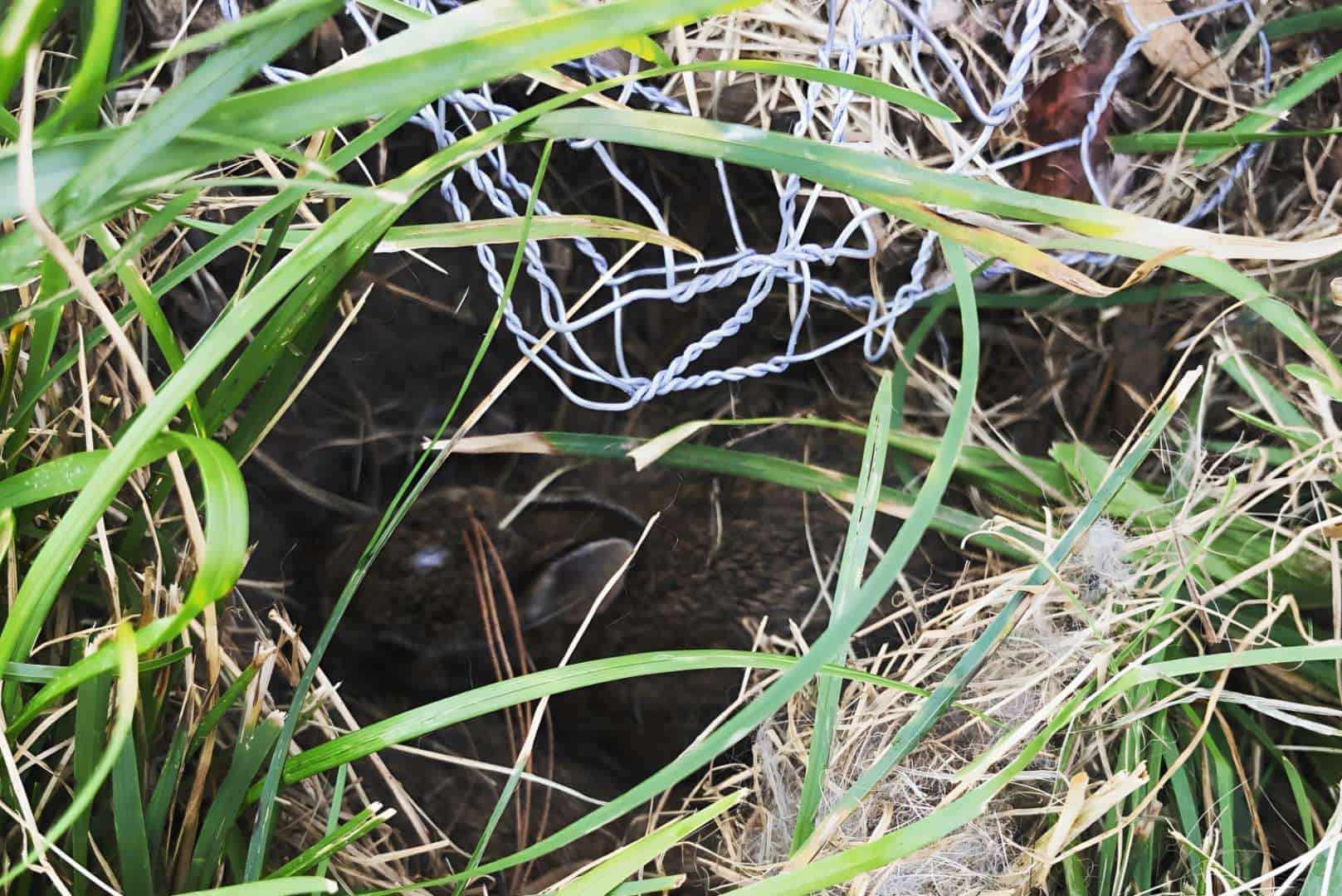
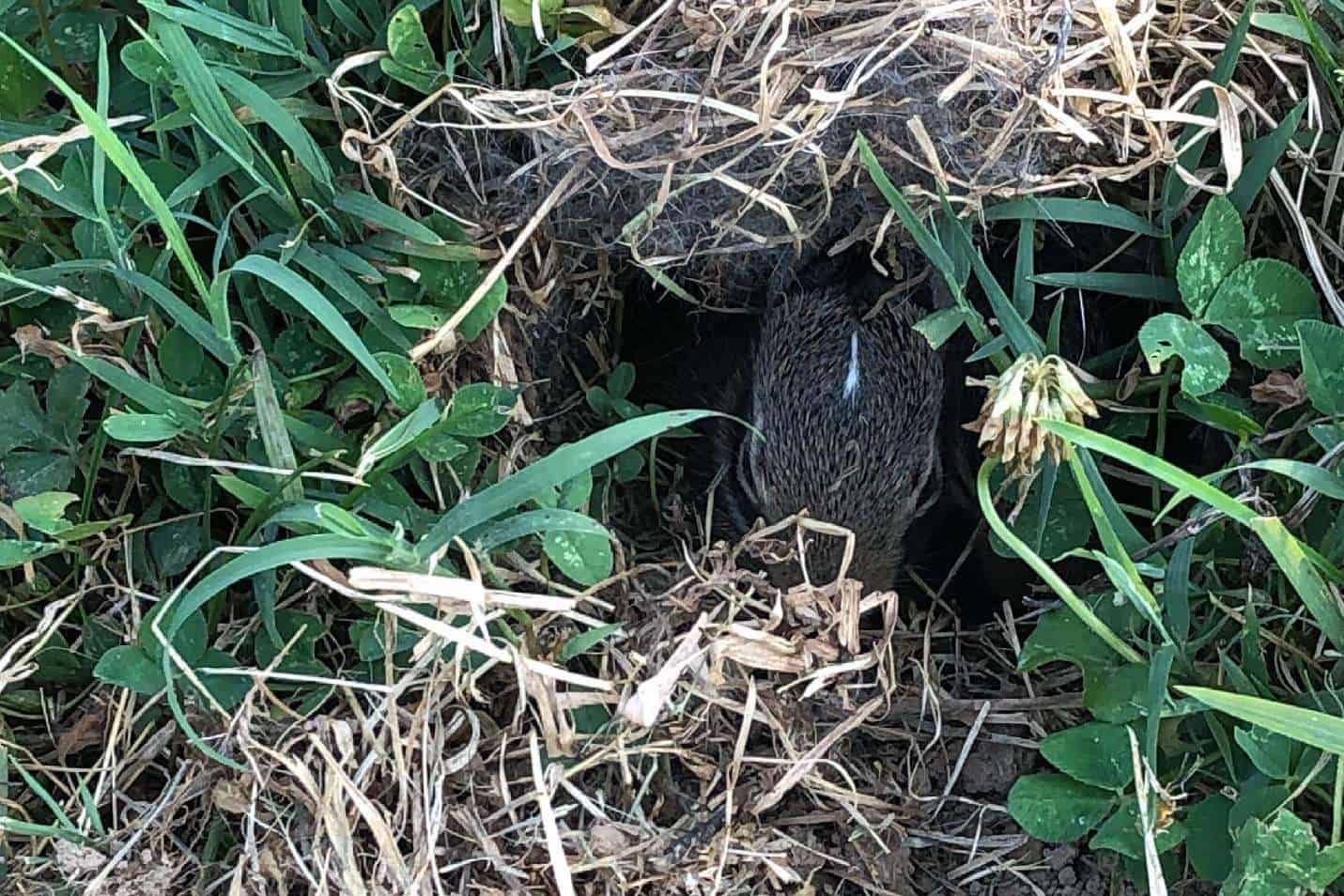
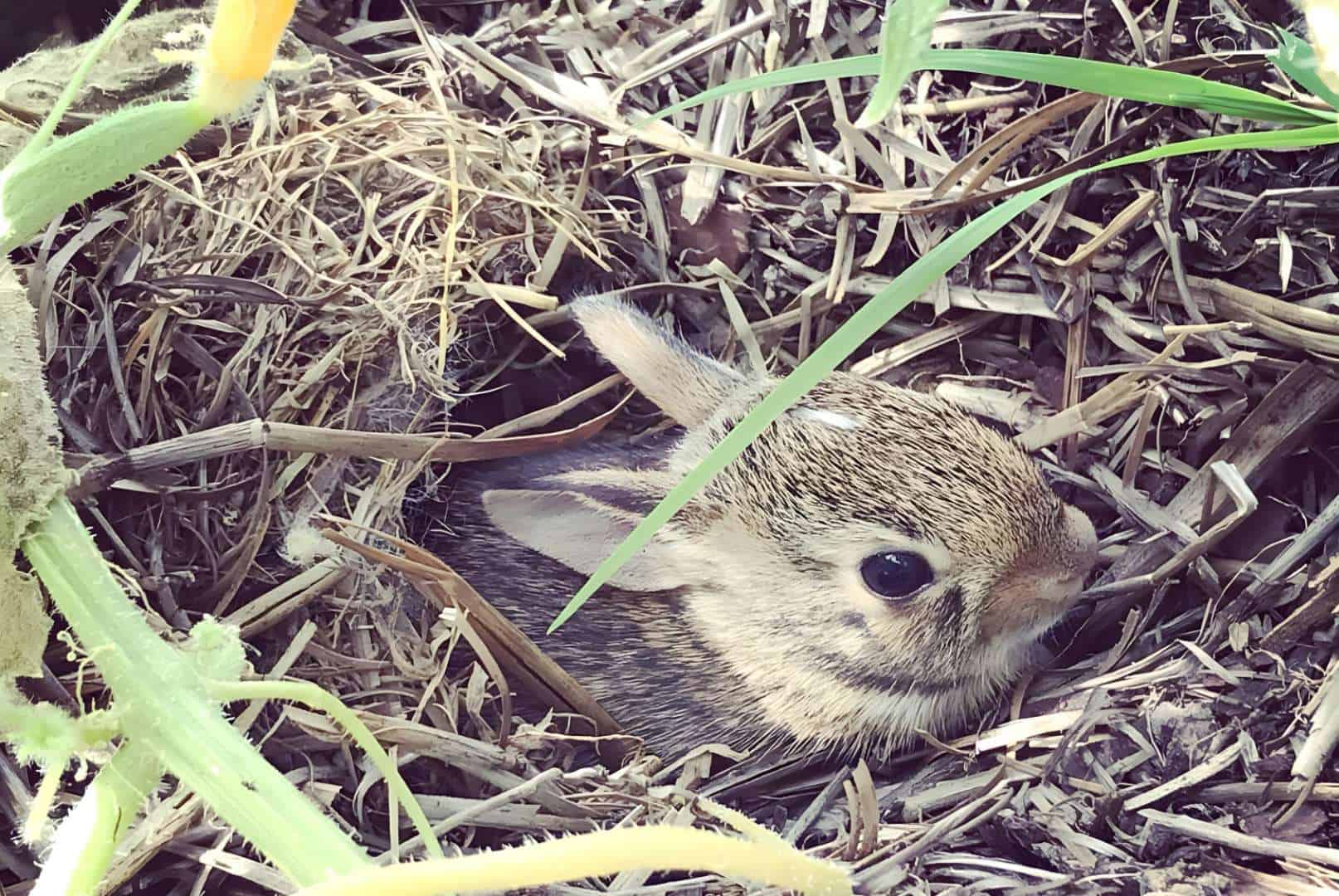
A rabbit made a nest in the middle of my front lawn. Now that they are long gone can I fill it in and plant grass? Will the come back to reuse it?